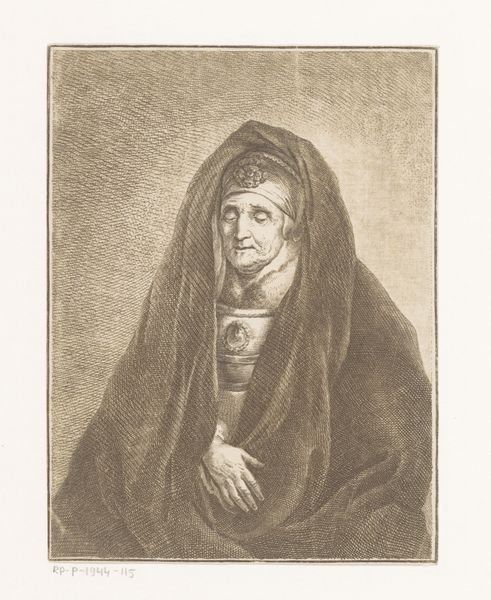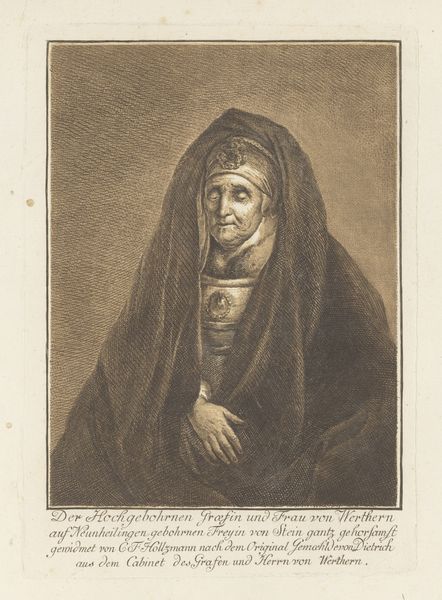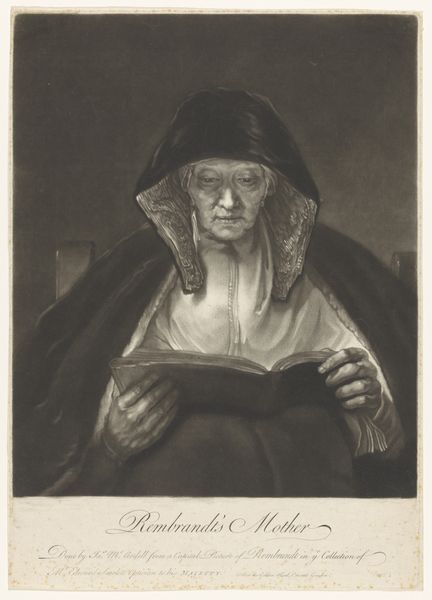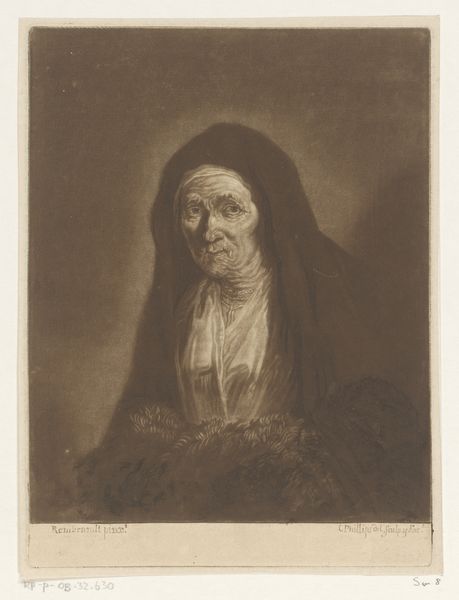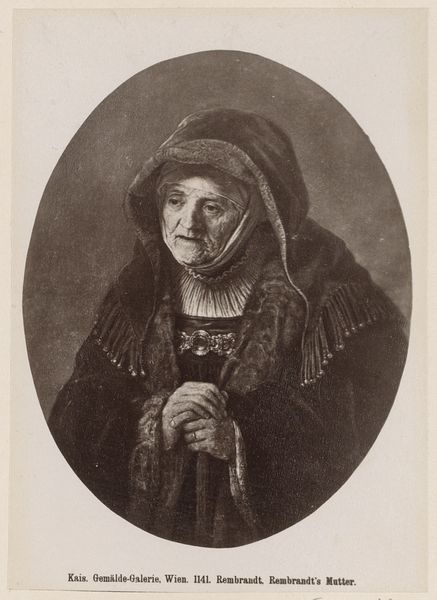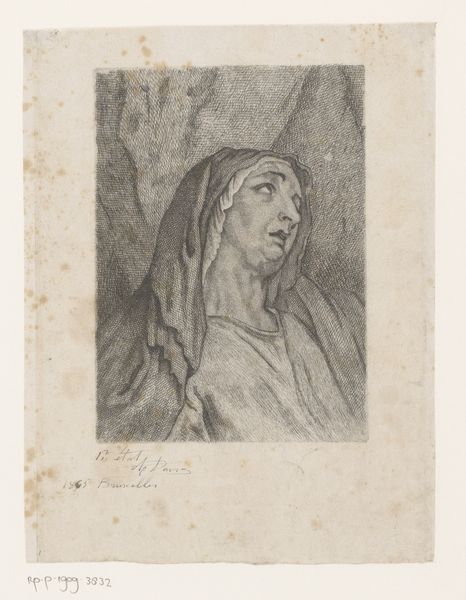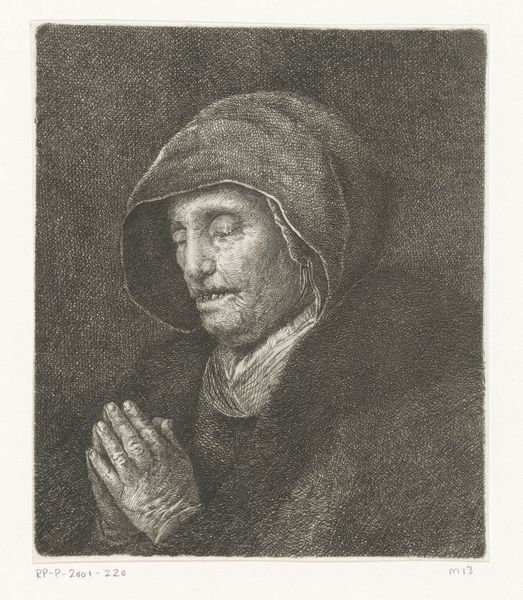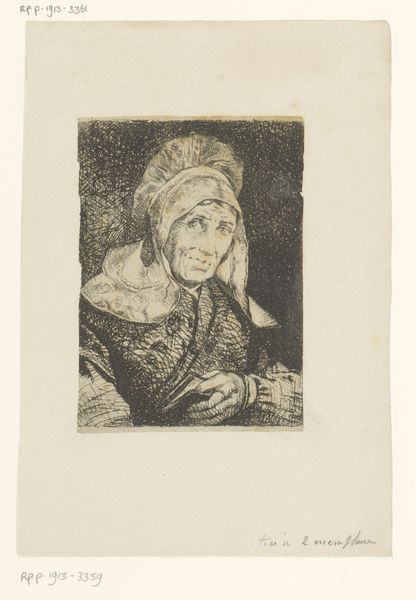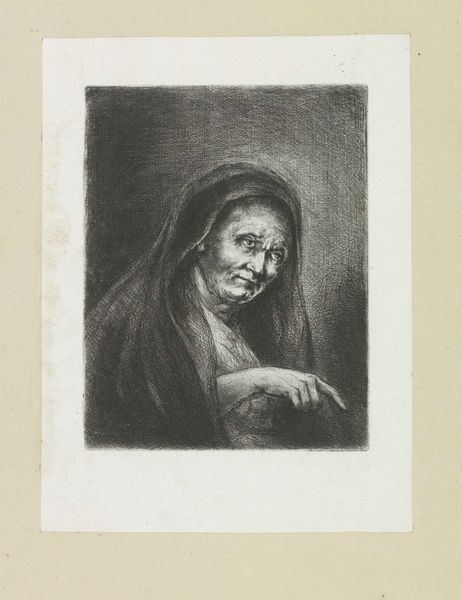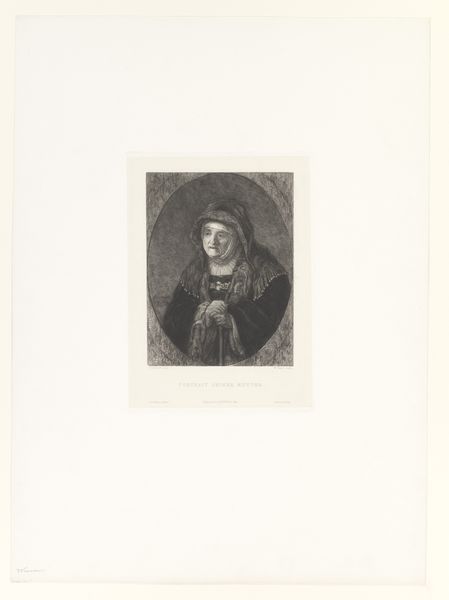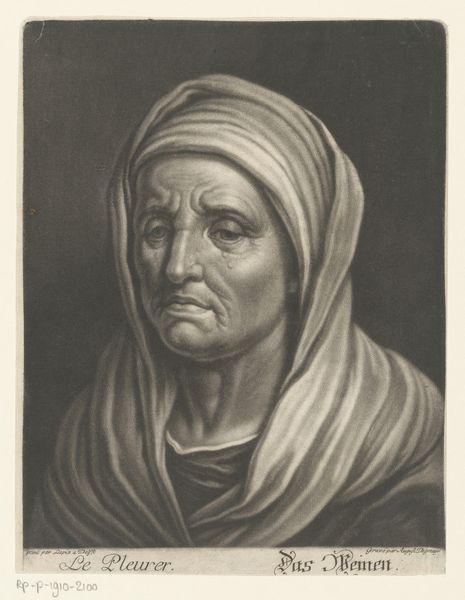
Dimensions: height 165 mm, width 125 mm
Copyright: Rijks Museum: Open Domain
Editor: So, this is "Portrait of an Unknown Old Woman" by Carl Friedrich Holtzmann, sometime between 1750 and 1811. It’s a print, an engraving. The woman’s face seems really…resigned, and the heavy drapery makes her appear almost cloistered. What strikes you when you look at it? Curator: I am struck by the weight of visual echoes here. The enveloping fabric – almost nun-like – speaks to established iconographies of mourning, but also perhaps of hidden wisdom. The face, though careworn, bears traces of symbols – the adornments suggesting past status or affiliation. Notice how those embellishments contrast with the perceived humility of the pose and veiled head. Editor: Do you mean like, the brooches are signifiers? What would they signify? Curator: Precisely! Symbols always function within systems. Consider what motifs are being referenced: the floral design, the shape, their placement. They would be recognizable markers of identity – marital status, family lineage, religious order perhaps? It invites a symbolic unravelling. How do those potentially contrasting images, the plain face versus jeweled costume, shape your reading of the image, do you think? Editor: It almost makes her more complex, like she has layers that aren’t immediately apparent. Almost secretive? Curator: Indeed! It encourages us to look past the surface impression of age and simplicity to consider the accumulated experiences and identities encoded in those symbols. The image becomes a memory palace – its meaning reliant on decoding visual clues. Editor: That's fascinating, I didn't even consider the jewels as symbols. Now I can see them carrying cultural and even psychological weight! Curator: Yes! Symbols always lead us deeper, inviting active participation with images, they build bridges across time and cultural understanding.
Comments
No comments
Be the first to comment and join the conversation on the ultimate creative platform.
